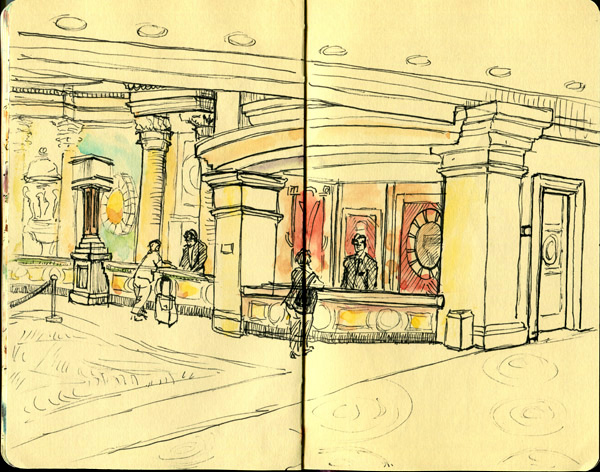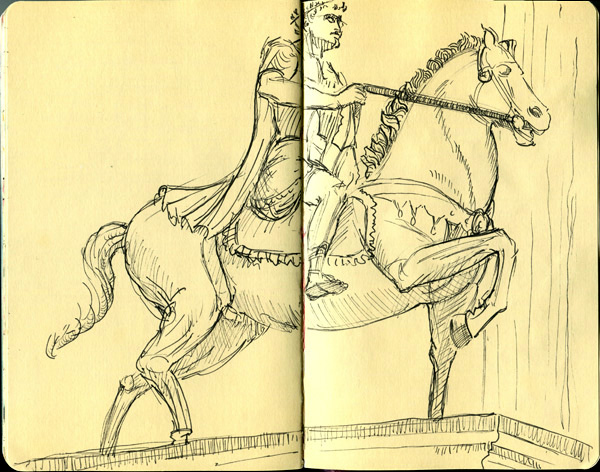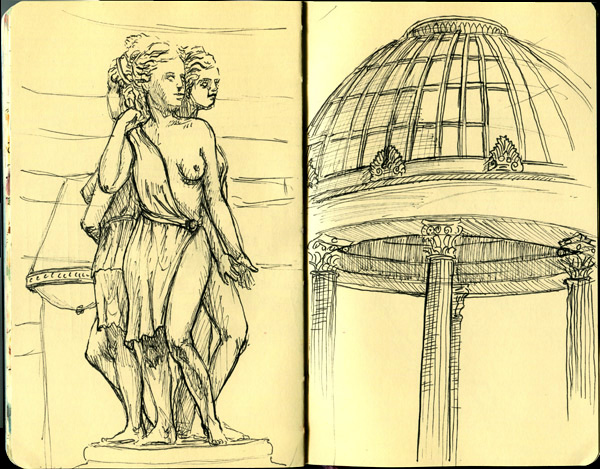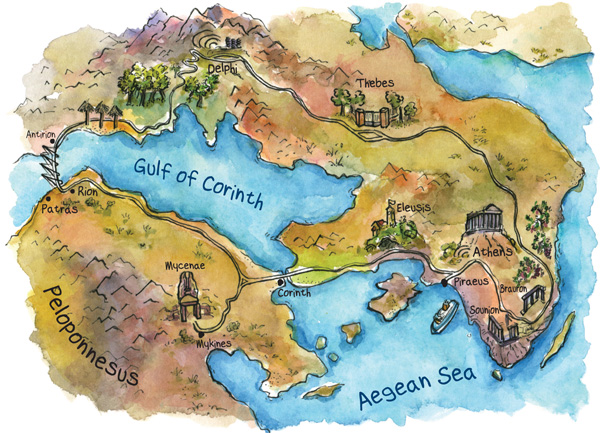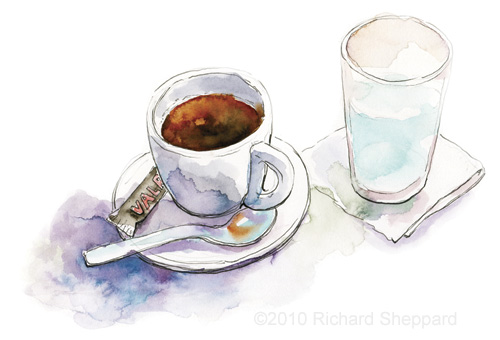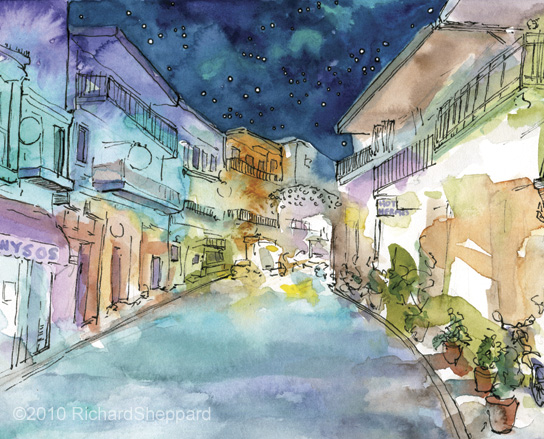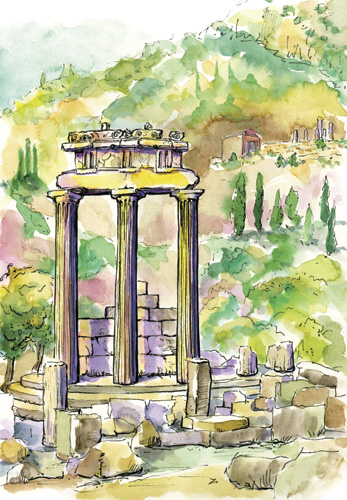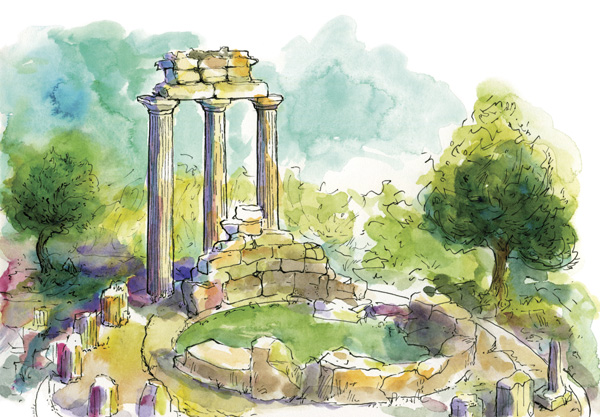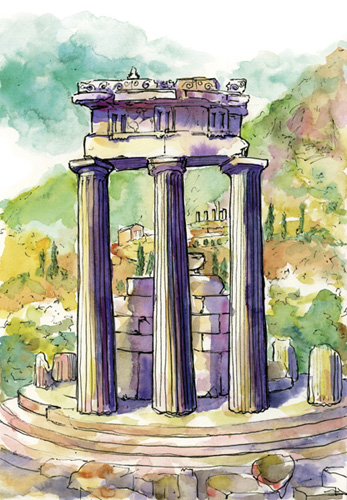Last year my wife and I went to Vegas to celebrate our anniversary. We happened to catch two shows: the Cirque du Soleil’s “O†show and the ever funny Bette Midler. While Marilyn was enjoying swimming at the pool, I was out sketchbooking. That’s right, not gambling, not drinking, but sketchbooking. It may sound like a strange thing to do in Vegas, but I found Caesars Palace to be a real joy to draw. The neo-classical architecture that showcases the hotel’s elegance is a pleasure to look at, but what really interested me were the life sized Roman sculptures scattered throughout the hotel. Upon our arrival June 25, we found out that Michael Jackson had died which added a very surreal feeling to the day.
I drew this while lying out at the pool on a lounge chair looking up.
The drawing on the left shows the Three Muses sculpture that is the center piece to Ceasar’s lobby. The drawing on the right is an unfinished drawing of the dome covering part of the pool area.
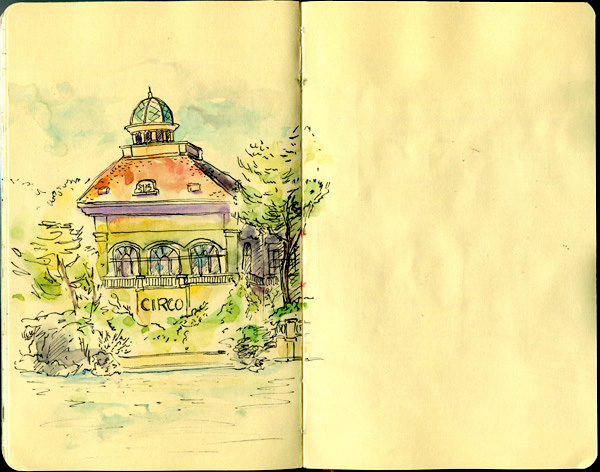 On our last night we had nice dinner at the Circo restaurant located at the Bellagio Hotel. We were lucky to be seated by the window which overlooked the famous fountains along the Boulevard. The following morning, I was out early before it got too hot and drew the restaurant as seen from the Boulevard.
On our last night we had nice dinner at the Circo restaurant located at the Bellagio Hotel. We were lucky to be seated by the window which overlooked the famous fountains along the Boulevard. The following morning, I was out early before it got too hot and drew the restaurant as seen from the Boulevard.
